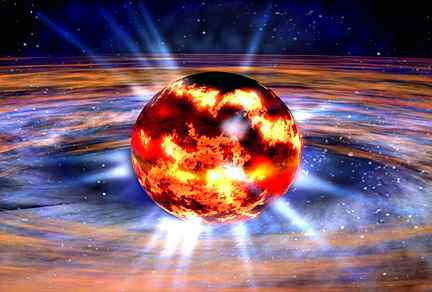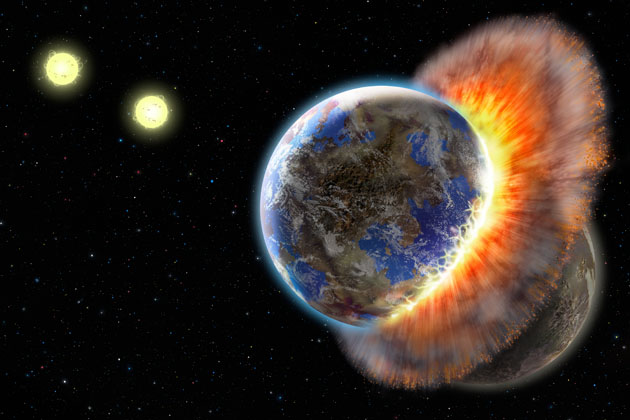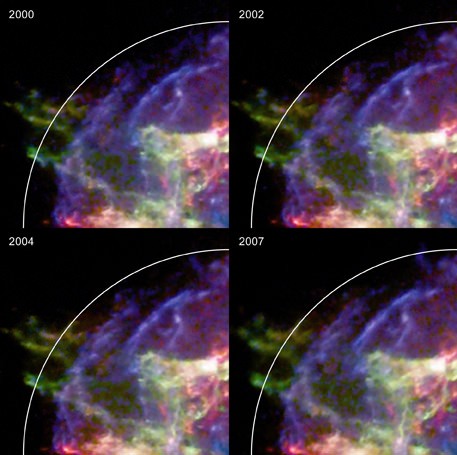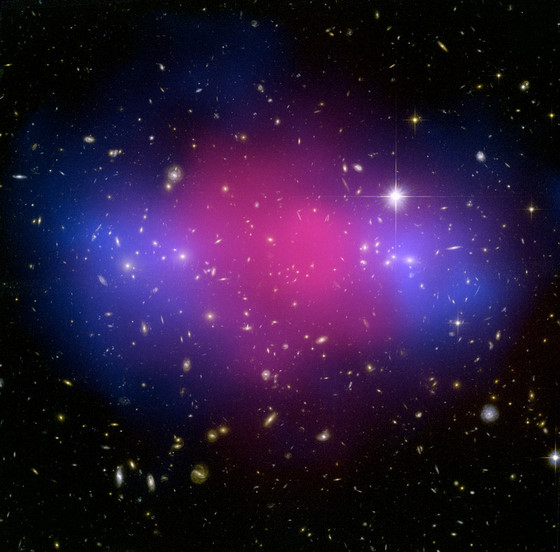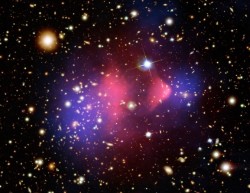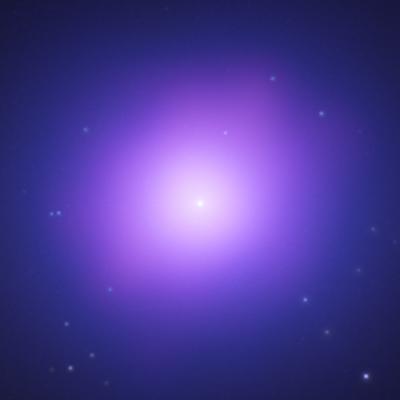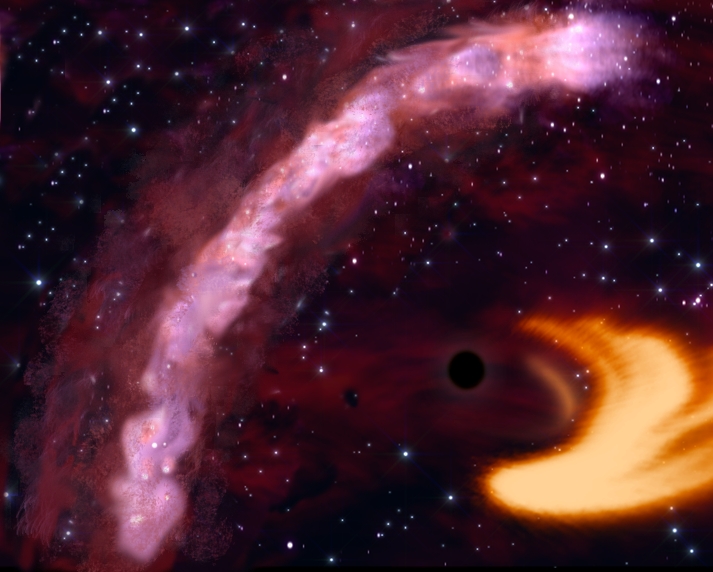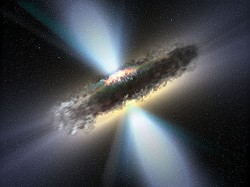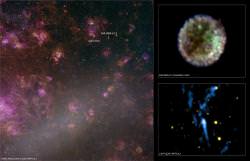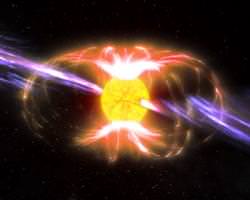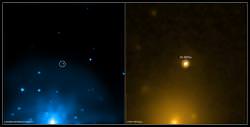[/caption]So how do you take the temperature of one of the most exotic objects in the Universe? A neutron star (~1.35 to 2.1 solar masses, measuring only 24 km across) is the remnant of a supernova after a large star has died. Although they are not massive enough become a black hole, neutron stars still accrete matter, pulling gas from a binary partner, often undergoing prolonged periods of flaring.
Fortunately, we can observe X-ray flares (using instrumentation such as Chandra), but it isn’t the flare itself that can reveal the temperature or structure of a neutron star.
At the AAS conference last week, details about the results from an X-ray observing campaign of MXB 1659-29, a quasi-persistent X-ray transient source (i.e. a neutron star that flares for long periods), revealed some fascinating insights to the physics of neutron stars, showing that as the crust of a neutron star cools, the crustal composition is revealed and the temperature of these exotic supernova remnants can be measured…
During a flare outburst, neutron stars generate X-rays. These X-ray sources can be measured and their evolution tracked. In the case of MXB 1659-29, Ed Cackett (Univ. of Michigan) used data from NASA’s Rossi X-ray Timing Explorer (RXTE) to monitor the cooling of the neutron star crust after an extended period of X-ray flaring. MXB 1659-29 flared for 2.5 years until it “turned off” in September 2001. Since then, the source was periodically observed to measure the exponential decrease in X-ray emissions.
So why is this important? After a long period of X-ray flaring, the crust of a neutron star will heat up. However, it is thought that the core of the neutron star will remain comparatively cool. When the neutron star stops flaring (as the accretion of gas, feeding the flare, shuts off), the heating source for the crust is lost. During this period of “quiescence” (no flaring), the diminishing X-ray flux from the cooling neutron star crust reveals a huge wealth of information about the characteristics of the neutron star.
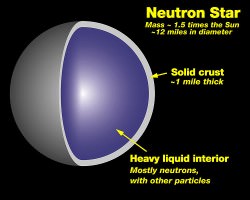
Including the data from another neutron star X-ray transient KS 1731-260, the cooling rates observed during the onset of quiescence suggests these objects have well-ordered crustal lattices with very few impurities. The rapid temperature decrease (from flare to quiescence) took approximately 1.5 years to reach thermal equilibrium with the neutron star core. Further work will now be carried out using Chandra data so more information about these rapidly spinning exotic objects can be uncovered.
Suddenly, neutron stars became a little less mysterious to me in the 10 minute talk last Tuesday, I love conferences…
Related publications:
- Chandra and Swift observations of the quasi-persistent neutron star transient EXO 0748-676 in quiescence, Degenaar et al., 2008
- THE CRUST COOLING CURVE OF THE NEUTRON STAR IN MXB 1659-29, Rudy Wijnands, 2004

